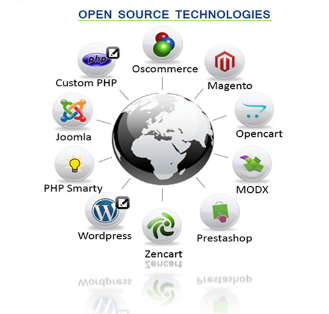

|
Overview:
|
Context
Technological interventions in the governance structure can improve the efficiency of the policy implementation while ensuring accountability and transparency in the governance process.
Background
- In the changing demand of socio-political and socio-economical dynamics, there is a dire need for reforms in the governance structure to be more accountable and responsive.
- However, the recent pandemic had shown the flaws and gaps in the governance process while handling the emergency crisis.
- In this dire need and flaws in the governance structure, the emergence of new technologies is inevitable.
- New technology like open technology can push for significant governance reform, with the special characteristics of accountability, responsibility and answerability.

Analysis
What is meant by 'Openness' in technology?
- Openness of technology refers to free availability of the source code to every user or developer for usage, modification and redistribution.
- The concept of openness in technology involves two major pillars:
- Digital Public Goods (DPGs)
- Digital Public Infrastructure (DPI)
- Both the pillars DPGs and DPIs are anchored in the idea of 'openness' and open source.
- These are accessible and available to anyone who wishes to use them, modify them or build upon it.
What are DPGs?
- Open-source software, open data, open AI models, open standards and open content that adhere to privacy and other applicable laws and best practices.
- It has the potential capacity to achieve Sustainable Development Goals (SDGs)
- DIVOC is one of the examples of Digital Public Goods used by India and other nations to provide vaccine certificates for COVID doses.
What are Digital Public Infrastructures (DPIs)?
- Open-source software, open data, open AI models, open standards and open content that adhere to privacy and other applicable laws and best practices,
- One example of DPI is OpenG2P, which digitized the cash transfer during the West African Ebola
What are the benefits of open source technology that India can derive?
- Free availability and accessibility: As compared to proprietary software open source doesn't have any vendor lock-in, i.e., no fee is charged for the use and modification of the technology.
- A community for developers: Any successful project would have a thriving community of developers to build suitable target-oriented software open-source software provides the platform to the desired developers.
- Secure software: Open source technology and software are vulnerable to the security breach, when such vulnerability is reported the team of developers gets the upper hand to resolve the issue, which makes it more secure and safe.

- Governance structure: Digital Public Goods and Digital Public infrastructure along with community engagement has the potential to democratize the governance structure of the nation. More accountable and responsive governance.
- Networked health care: Open source technology can bring a revolution in the health care sector in a geographically diversified country like India. Accessible and affordable healthcare services can be enabled for every citizen.
- Quality education: Emerging digital education can be fostered by open source technology.
- Service ecosystem: India is one of the largest service sector exporters in the world, availability of open source technology will help the Indian companies to hire developers and make their service route safer, secure and target-oriented.
- Digitization of payment: Open source technology has the potential capacity to be used in the digital India mission and make the payment system cashless.
Comparison
|
Open source |
Proprietary Software |
|
Advantages:
|
Advantages:
|
|
Disadvantages:
|
Disadvantages:
|
What are the major steps that need to be taken to implement the technological reform?
- Moving from words to action: To implement the process of Open source technology, accessible and affordable internet service plays a crucial role. The policy framers at the national and sub-national levels need to bridge the gap of the digital divide and penetrate the use of open source technology.
- Building deeper country capacity: Policy framers should focus on building up the infrastructure and frameworks for secure cyberspace to support the growth and penetration of open source technology and software.
- Leave no one behind: The objective of the implementation plan needs to be inclusive and democratic, which involves people's participation and development for all.
Conclusion
Open source approaches to technologies can help the government more efficiently develop a tailored solution to big and urgent challenges. Implementing GPGs to leverage DPIs can provide crucial interventions for emergencies and development. DPGs and DPIs when combined with community engagement can make the governance structure more transparent and accountable. Some major challenges lie ahead in the implementation process of the technology which needs to be catered to achieve the Sustainable Development Goals' 2030.
|
PRACTICE QUESTION Q1. What do you understand by open source technology? How India can facilitate the creation of Open-source software? Q2. “Open source software is the key for digital democracy". Elucidate. Also, site 3 examples of government open source software. |



